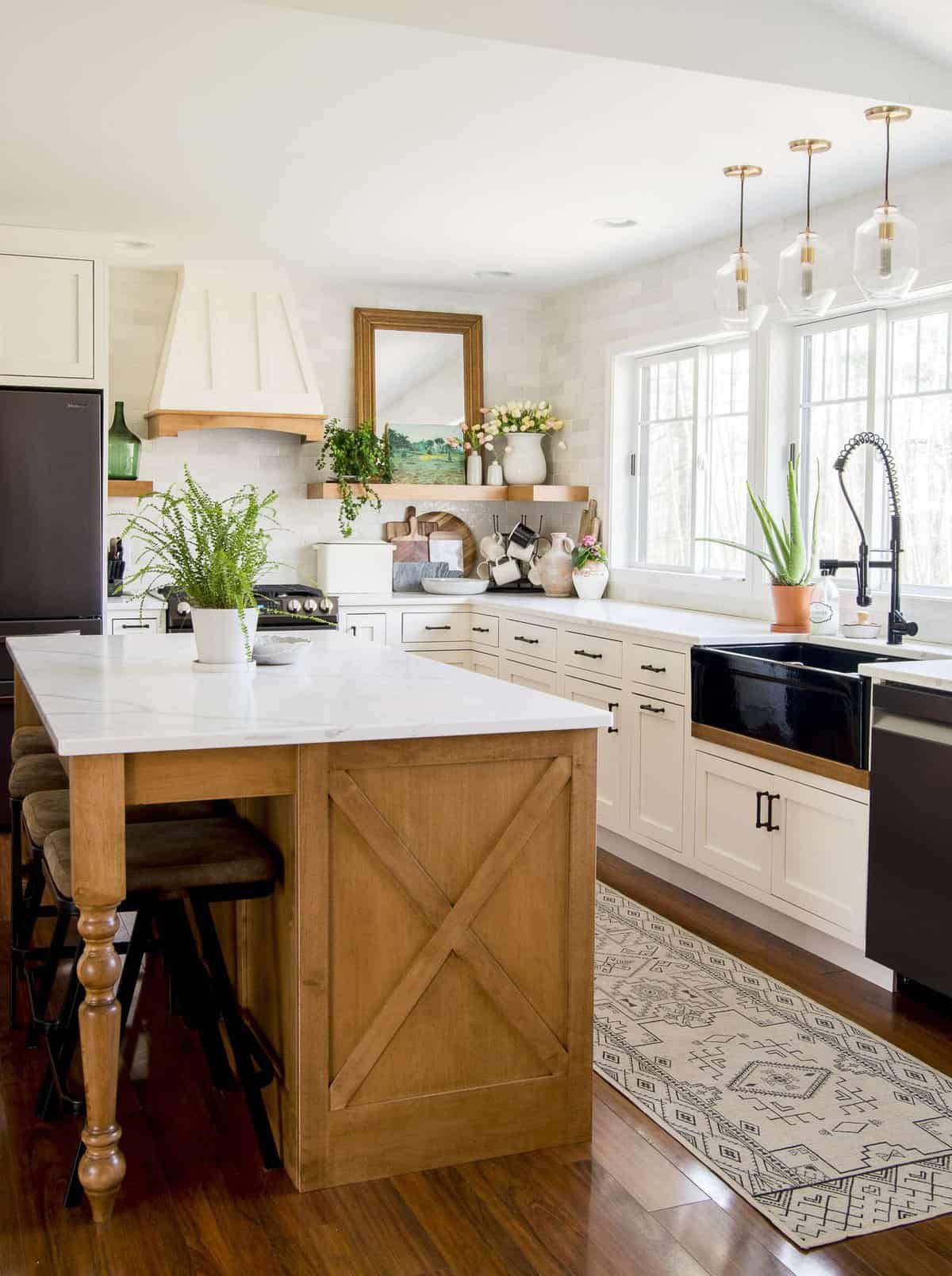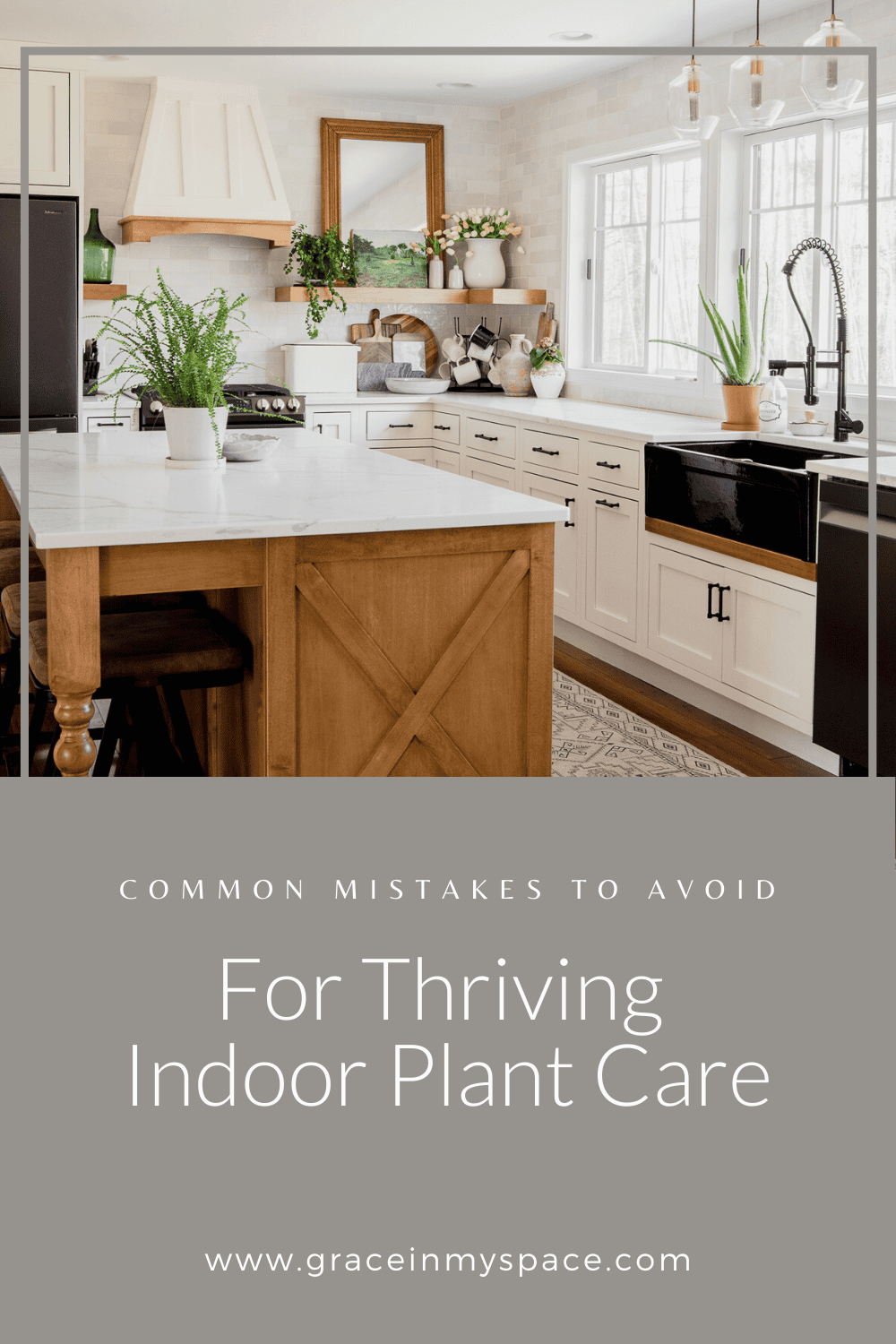Common Mistakes to Avoid for Indoor Plant Care
Growing plants indoors is an easy way to boost your home’s interior and bring life to a space. However, caring for houseplants can be intimidating if you’re a new plant owner! In this post, you’ll learn the most common mistakes to avoid for proper indoor plant care.
This post is sponsored by Breck’s. All thoughts and opinions are my own.
This post may contain affiliate links where I earn a small commission on your purchases.
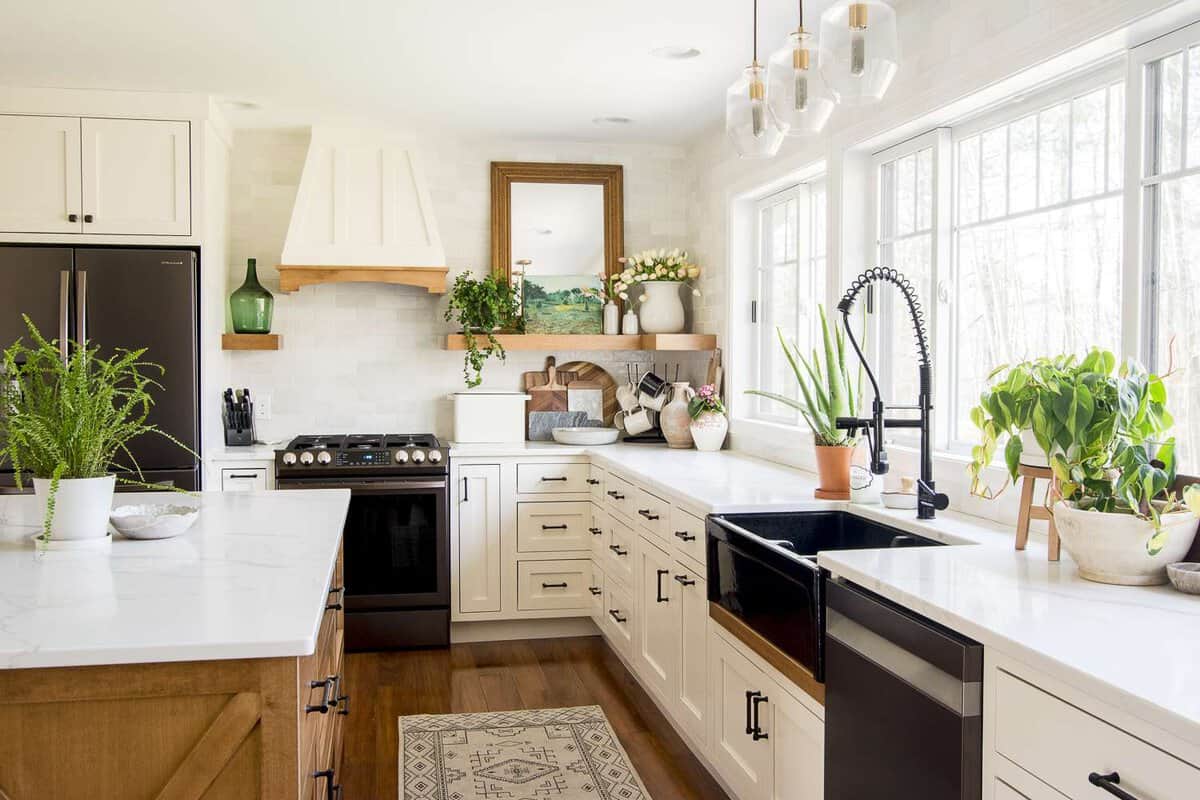
Indoor Plant Care | Houseplants that Thrive
I recently received three new varieties of houseplant from Breck’s.
I was so excited to get them and try out my plant lady skills on some new varieties. After almost 4 years of caring for indoor houseplants, I was ready to tackle some indoor plants that weren’t considered “beginner level”.
That prompted me to go back to all I’ve learned over the last four years of growing plants indoors, so I wanted to round up that information into one post to help you care for houseplants that thrive!
Make sure to become a blog subscriber to get access to my free printable library as well. Sign up now to download my care sheet for best beginner indoor plants!
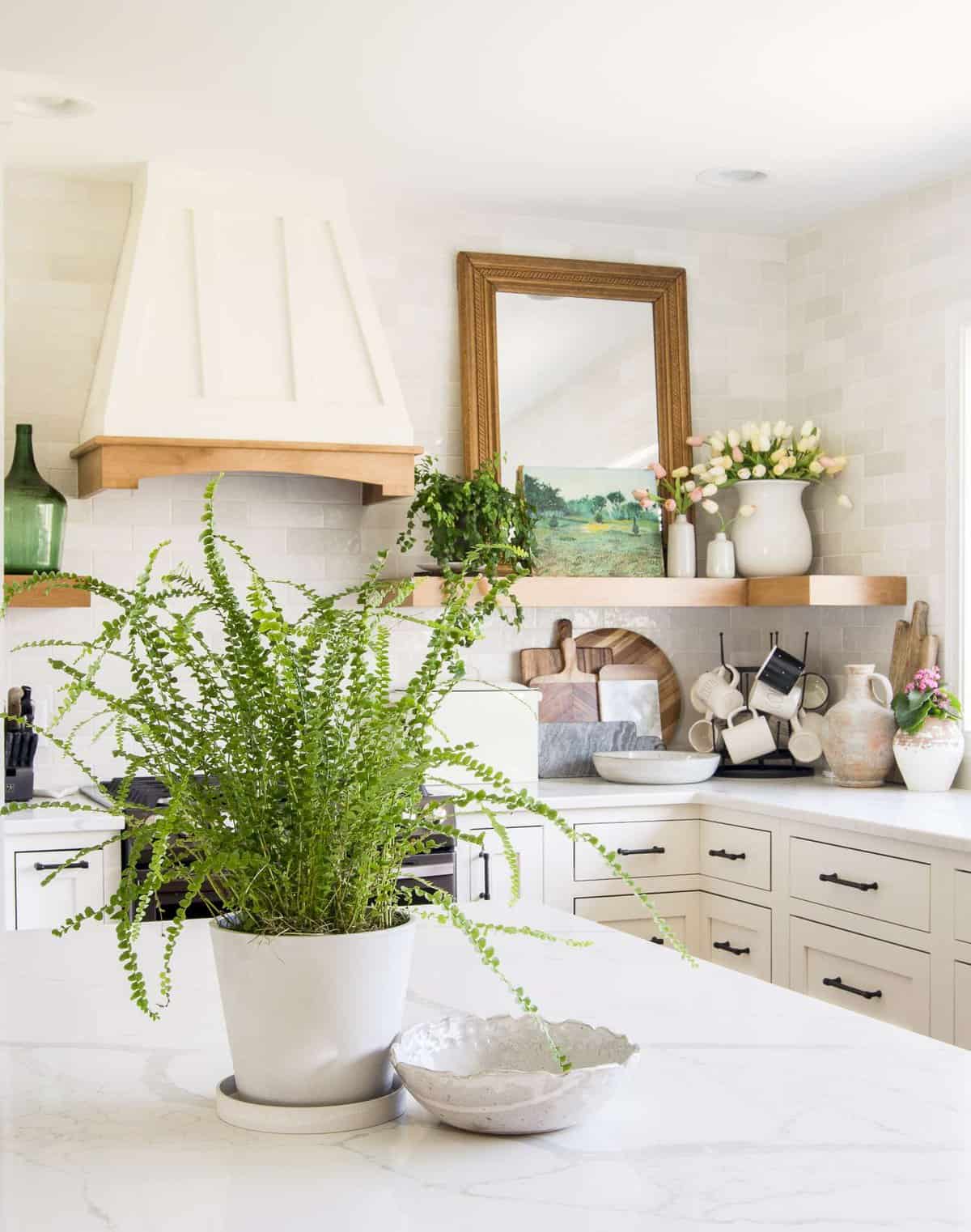
Common Mistakes to Avoid for Indoor Plant Care
I’ve certainly made my fair share of mistakes, so learn from my experience. Here are the most common mistakes to avoid when caring for indoor plants.
Selecting The Wrong Plant for Your Expertise
This is the most common mistake beginners make when diving into houseplant ownership. It is true that plants have varying levels of temperament.
Some are easy to care for. Some are more prone to disease. Some are only suitable for certain gardening zones. Some are happy to be neglected while others are like a third child.
So, the first mistake to avoid is to purchase your indoor plants without doing research first.
Breck’s has an incredible selection of indoor plants, as well as perennials and bulbs to choose from. However, you can’t simply buy the one that looks the prettiest!
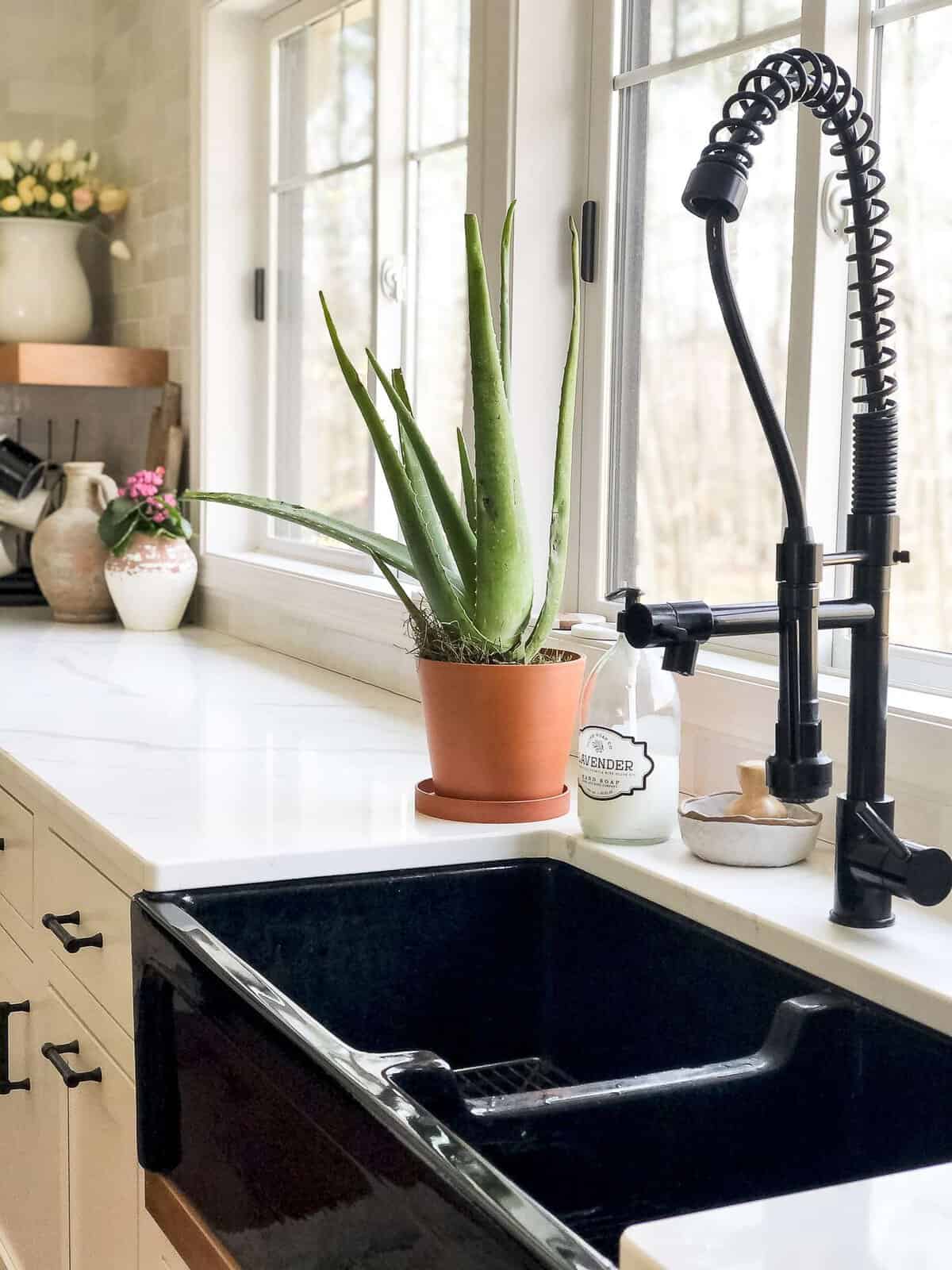
Make sure to do you research to determine which plant is best to start out with and practice your plant care on a beginner plant to start.
My favorite beginner houseplants are pothos, hoya wax plant, ZZ plant, snake plant and philodendron.
You can find a quick care guide for all of these beautiful beginner plants in my members-only printable library!
Not Journaling a Watering Schedule
The second most common mistake for houseplant care is incorrect watering. Whether you’re overwatering or under watering, your plants will suffer.
How often should you water indoor plants?
Consider your fingers. When you are in a pool for too long they become pruny. Conversely, when they are overly dry they crack and can be painful. Plant roots have the same problem. Soggy roots can kill a plant just as quickly as roots that cannot get the nutrients they need to grow.

I highly recommend starting a watering journal for your plant care. With the whirlwind of life, I can barely remember what I ate for breakfast, much less when I last watered my plants.
So, when I get a new plant I record when I water and how much, and then see how the plant reacts to it. Make sure to test the soil before the next watering. If it is still moist an inch into the soil, then it is not yet time to water again (for most plants).
By keeping a journal and getting onto a watering schedule, you’ll be able to easily give the appropriate amount of water to each plant based on it’s needs.
If you don’t feel confident in your assessment of the soil saturation, you can buy an affordable soil meter! These make it foolproof since the meter shows you whether the soil is wet, moist or dry.
How much should I water my plants?
Watering plants is a science since different plants like a different amount of water. Some do best in continually moist, but not wet, soil. Others can thrive in dry soil for days. My rule of thumb for how much water to give indoor plants is based on the type of plant and my soil meter.
Most indoor plants come with a care guide that tells you how they like the soil. Keep that in mind, and use the soil meter to determine when to water them. However, when you do water them, it is important to fully saturate the soil.
If you’re able, bring your plant to a sink or tub to water it, rather than using a watering can. Run the water directly into the plant pot until it is saturated and water starts to come out of the drainage holes. Let the plant drain into the sink until it is no longer dripping. Then, pick it up and rotate it so any pockets of water can escape through the drainage holes.
Your plant pots should always have drainage holes! If you want to use a decorative pot that doesn’t have any, you can either drill one into the pot with the proper drill bit, or you can use the nursery pot the plant comes in and simply place it inside the decorative planter. That way, you can remove it to water when needed.
Not Giving the Proper Foundation
Next, make sure you have the proper foundation for your plant to grow. So many novice plant owners simply grab whatever soil they can find without regard for the type of plant they have.
An overarching standard is that garden soil is NOT for indoor plants. It is too dense and doesn’t offer the proper drainage for most indoor plants. Potting soil is a much better choice.
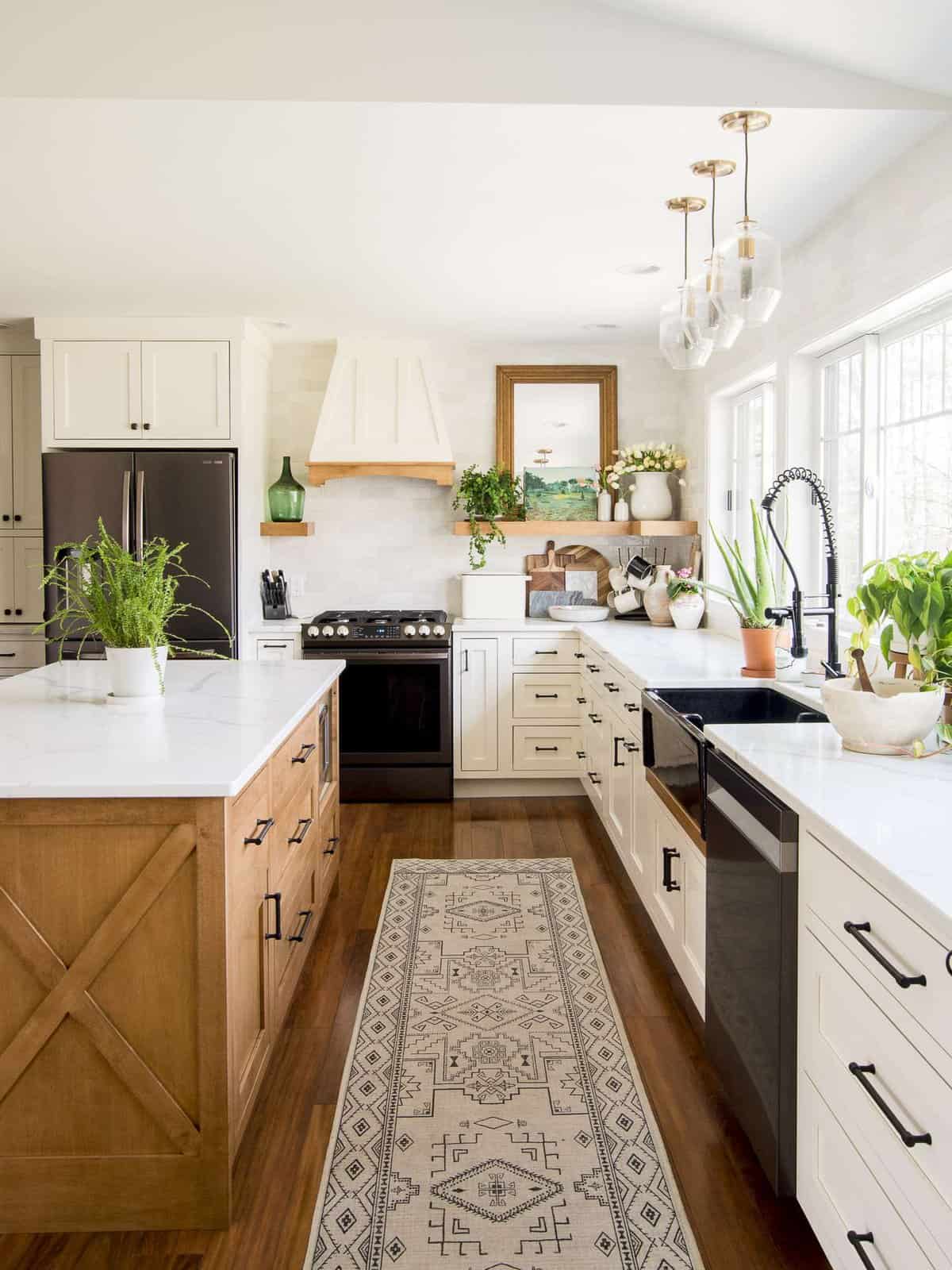
But, you must also do your research on what your plant needs. There are so many varieties of plants and they all require different soils. Some need sandy soil, others need nutrient rich soil, and some even prefer no soil!
Make sure to read all the details that Breck’s offers for each plant to know which type of soil to use.
Never Amending the Soil
Another mistake that many make is not paying attention to the soil once your houseplant has been planted initially.

Plant food, epsom salt solutions, coffee grounds, egg shells and certain spices all give different additives to the soil to help the PH levels for your plant.
If you notice your plant is starting to look sick, make sure to do the research necessary to see what the cause is and then adjust your feeding or watering schedule appropriately.
This is important to do at the first sign of droopy leaves, yellowing, or brown spots before your plant is too far gone.
Ignoring Signs of Sickness
That leads me to another common mistake for indoor plant care. Ignoring the signs of sickness because you just don’t know what to do! Even after researching the symptoms of a dying plant, it can be confusing to know where to start.
Here are a few commonly overlooked issues.
- Root bound – When roots have overgrown their pot size they cannot absorb the nutrients needed. Try repotting in a larger pot.
- Dirty Leaves – When leaves are full of dust they cannot absorb the nutrients needed from sunlight. Clean them with a shower in the sink or tub. For large leaf plants, wipe them down with a damp cloth.
- Overpacked Soil – If your plant has gone too long without the proper watering schedule it can become hardened. Aerate the soil with chopsticks to allow air to circulate.
- Incorrect humidity – Some plants prefer a more humid atmosphere than others. Group humidity-loving plants together so they can feed off each other!
- Improper Drainage – If you’ve planted your houseplant in a pot without drainage, it will rarely survive. Make sure there are enough drainage holes and proper soil so the roots aren’t sitting in moist soil continually.
- Incorrect sunlight – Make sure you’ve placed your plants in a place where they get the appropriate amount of sunlight. This beautiful Pink Dutch Anthurium from Breck’s is one of the first plants I’ve been able to place in my double sided fireplace because of the light!
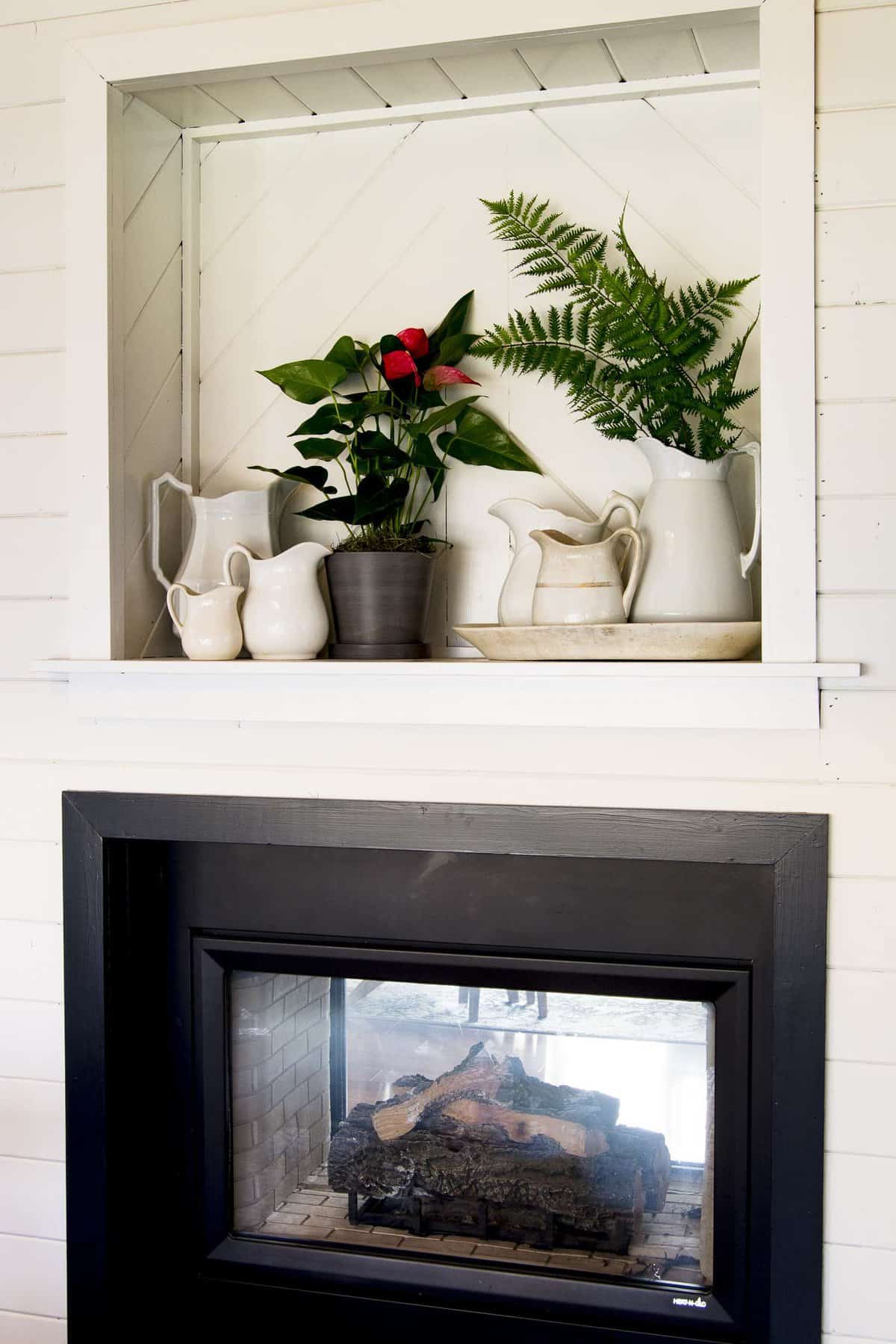
How to Prevent Gnats in Houseplants
If you’ve ever had an indoor plant then you most likely have encountered small black flies on indoor plants. These pests can be avoided with proper care. However, gnats happen!
The main reason that indoor plants cause gnats is because of over-saturation in the soil. When you saturate the soil, but don’t have proper drainage, it creates a perfect little moist environment for pests to grow. They lay eggs in the soil and then the moist environment is the perfect condition for them to thrive.
Once you get gnats in indoor plants it can be hard to get rid of them. You need to attack it from both angles: eggs and adult gnats.
To kill gnat eggs in indoor plants, you can completely repot your plant into new fresh soil. This is the most effective route, but it may take your plant some time to recover from its environment being disrupted.
You can also try neem oil to get rid of bugs and their eggs. There are a lot of products that claim all natural pest insecticide, but neem oil is tried and true!
Next, you have to get rid of the adult bugs so that they don’t continue to lay eggs. You can try to capture them in a shallow bowl of cider vinegar and Dawn dish soap, like many have suggested. But I find these sticky fly traps to be much more effective!
Giving Up After One Failure
Finally, I constantly hear this from my Instagram followers. “I’ve killed everything I’ve ever tried.”
Perhaps that is true, but I’m guessing they made one of the common mistakes above! For instance, I’ve killed every succulent known to man. (I’ve since figured out that I had the wrong soil and was overwatering!)
Had I stopped trying, I would never be able to enjoy over 25 house plants that bring life into my home, clean the air, and provide other health benefits to my family. Plus, they are my favorite type of decor!
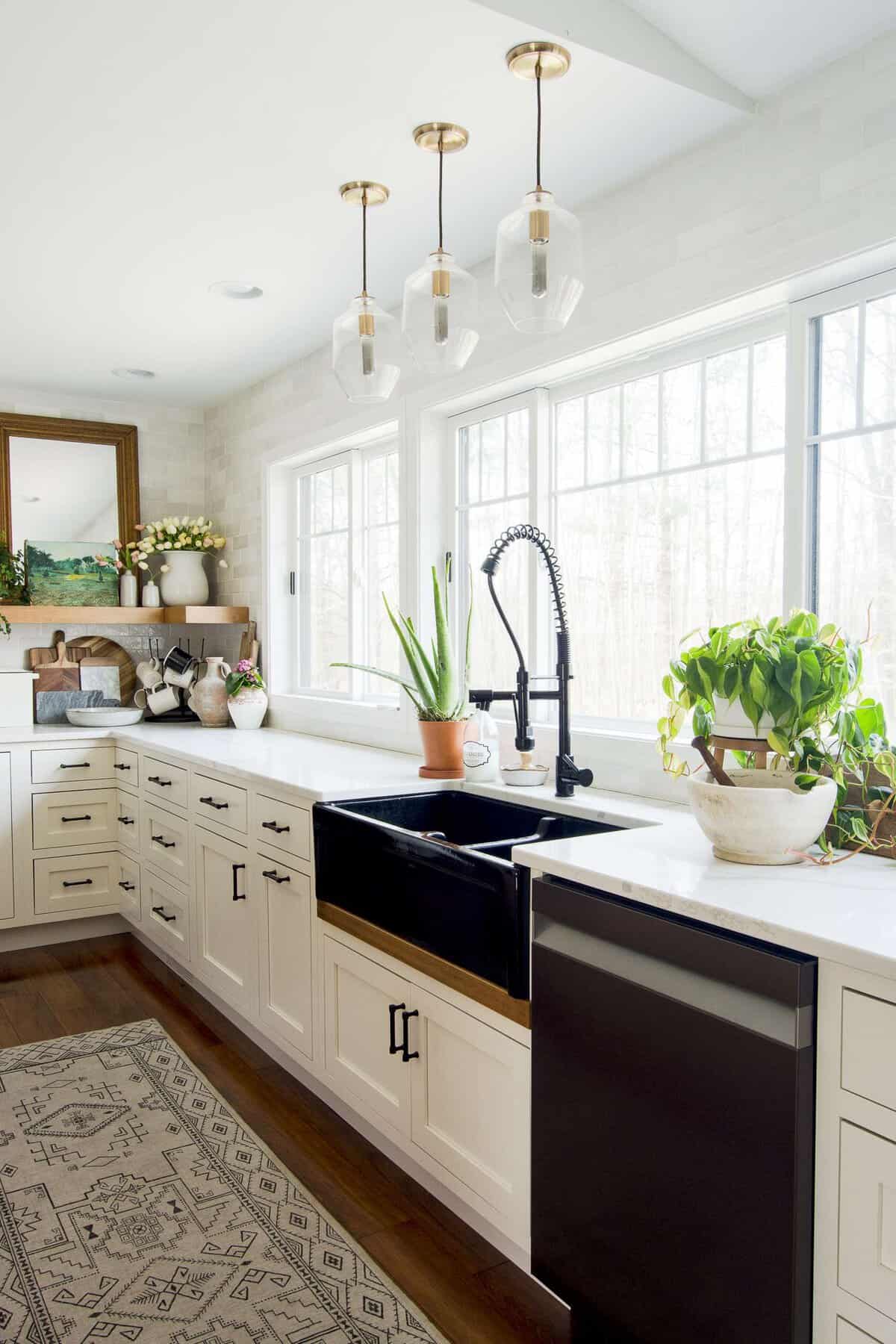
Stay Connected
Thanks so much for stopping by the blog today! Make sure to check out the beautiful selection that Breck’s offers of both indoor and outdoor plants.
And, if you’re looking for more plant care advice, make sure to check out my most popular plant care posts.
- How to Propagate Indoor Plants
- Best Trailing Indoor Plants
- Beginner Growing Plants Indoors
- Indoor Plants Made for a Black Thumb
